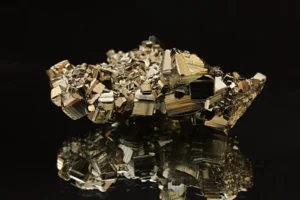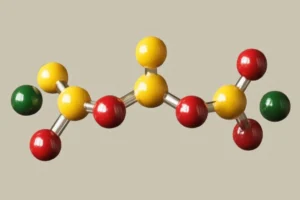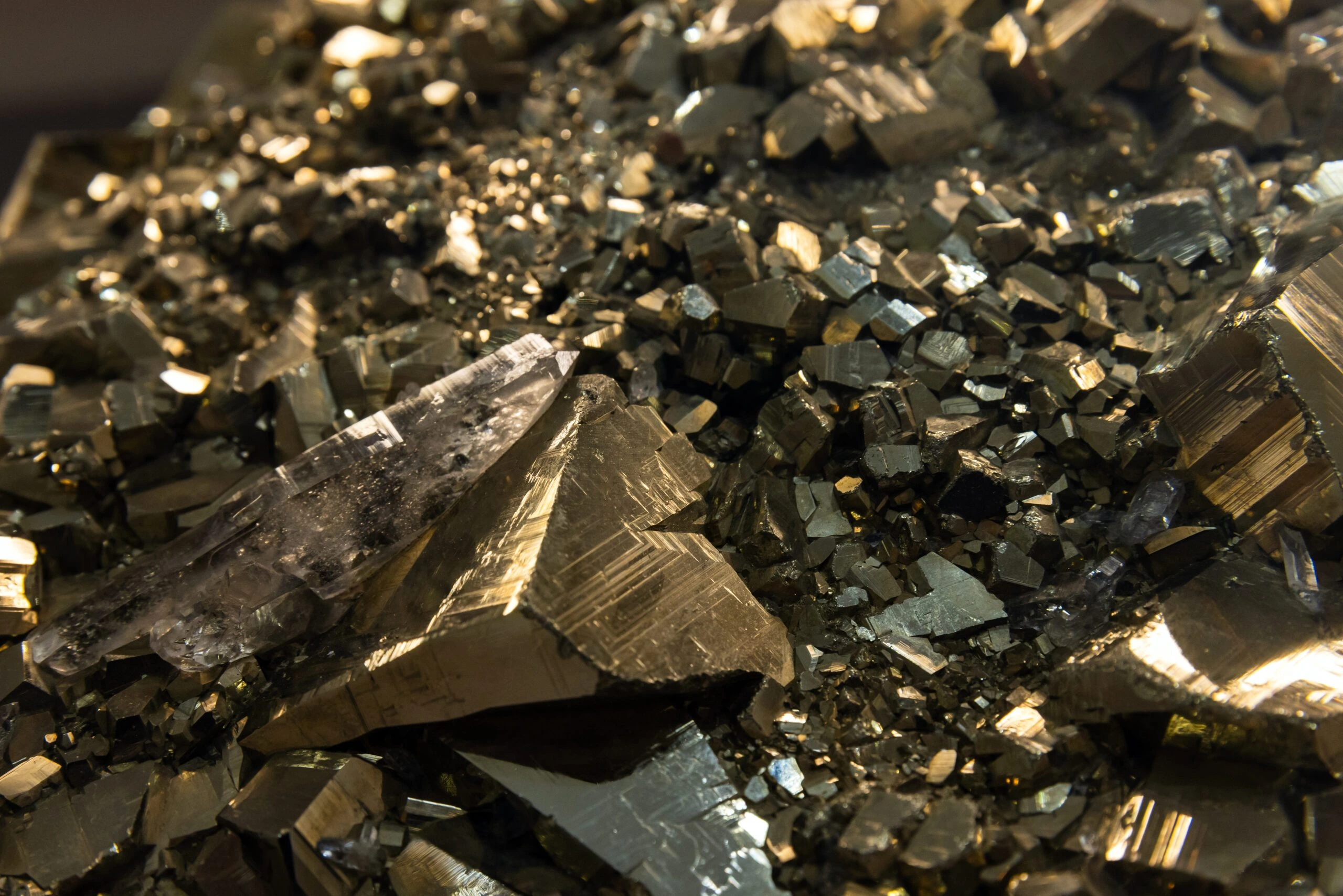April 1st is right around the corner and Spring is in the air. With the lifted spirits of warmer days, it feels only right to acknowledge the silliest day of the year. And as a precious metals refinery, we’ll seize any opportunity to relate a holiday to gold. So, in honor of April Fool’s Day, let’s talk about fool’s gold!
Historians aren’t entirely sure how and when April Fool’s Day began, although practical jokes following a calendar change in 1582 is one of the leading theories. We do, however, know exactly where iron sulfide – aka fool’s gold – originates: environments with low oxygen levels, high sulfur content and plenty of iron.

What is Fool’s Gold?
Pyrite (FeS₂) is the mineral that we all know as fool’s gold. But other minerals like chalcopyrite, mica, pyrrhotite, and marcasite are also mistaken for gold at times. Fool’s gold is really any mineral with a hint of yellow that people mistake for the real deal. But pyrite is definitely the main culprit, so we’ll focus on that.
Pyrite occurs naturally in a variety of geological settings, including:
- Rocks (igneous, sedimentary, and metamorphic)
- Hydrothermal veins associated with various types of ore deposits – including gold, copper, and lead-zinc deposits
- Coal deposits, where it forms as result of organic matter decomposition and subsequent mineralization
Many gold prospectors have encountered fool’s gold over the years, as pyrite and gold often form in similar geological settings. The term “fool’s gold’ gained prominence during the California Gold Rush when an influx of eager, inexperienced miners mistook pyrite for real gold. To the untrained eye, gold and pyrite can look similar. So, how does one spot the difference?
How to Distinguish Fool’s Gold from Real Gold
Simple observation is the first step in differentiating pyrite (or another mineral) from true gold. Pyrite has more of a brassy yellow color, whereas gold is a true golden, buttery yellow. Additionally, since gold is often naturally alloyed with a small amount of silver, its luster can appear lighter and slightly whiter in some cases.
Differences in shape and structure are also important. Pyrite typically forms in cubic, octahedral, or pyritohedral (12-sided) crystals with well-defined edges, giving it a geometric and blocky-looking structure. Unlike pyrite, gold ore lacks distinct crystal faces and instead forms as flakes, grains, or nuggets with more rounded, irregularly shaped edges.
Tests to Identify Fool’s Gold
According to the U.S. Geological Survey, the “fool’s gold” minerals (pyrite, chalcopyrite and mica) will crumble when poked with a metal point, as they tend to be brittle. Real gold, on the other hand, will gouge or indent because it’s quite soft and malleable.
You can also use a piece of unglazed porcelain to perform a scrape test. Real gold will leave a golden yellow streak when scraped against the porcelain, whereas pyrite and chalcopyrite will leave dark green/blackish streaks, and the common micas will leave white streaks.
Is Fool’s Gold Magnetic?
Likereal gold, fool’s gold is not naturally magnetic. However, scientists have actually discovered a way to electrically transform pyrite into a magnetic material! This is the first time that a non-magnetic substance has been electrically transformed into a magnetic one, potentially paving the way for the creation of valuable new magnetic materials for more energy-efficient computer memory components.
Also noteworthy: magnets are often used to test the authenticity of gold jewelry. However, because some gold alloys contain magnetic metals, this test is not always reliable.
How Much Is Fool’s Gold Worth?
Fool’s gold has little to no monetary value. However, it’s still very useful in other ways. Some even say it’s the mineral that built the modern world. After all, pyrite helped ancient civilizations light fires – it produces sparks when struck against hard materials like steel or flint.

Pyrite – An Industrial MVP
Pyrite is a major source of sulfur, the basic constituent of sulfuric acid – one of the most important industrial chemicals on earth. More sulfuric acid is made each year than any other manufactured chemical! It’s used in fertilizer production, petroleum refining, chemical manufacturing, batteries, water treatment, textiles, cleaning products and more.
Pyrite also holds some exciting potential in the electronics industry. Unlike gold and silver, which are great electrical conductors, pyrite is a semiconductor. As such, pyrite can control the flow of electricity, switching between conducting it and blocking it, depending on certain conditions like light or electric fields.
Researchers are currently exploring pyrite’s use in solar panels (side note: silver is also used in solar technology). Pyrite absorbs 100x as much light as silicon, which is currently the main solar material. Pyrite is also cheaper and more abundant than silicon, which means it could offer both better efficiency and lower production costs.
Follow the Pyrite, Find the Gold?
From a gold mining perspective, pyrite is practically worthless. But then again, because pyrite and real gold nuggets form under similar conditions, some gold prospectors believe that pyrite is the key to finding gold!
After centuries of “fool’s gold” references, the naysayers may have been the real fools all along: many pyrite deposits technically do contain real gold, albeit in extremely small concentrations. On average, pyrite contains about 0.25 parts per million (ppm) of gold, which is equivalent to 0.25 grams of gold per 1 million grams of pyrite. For comparison, gold ores extracted by mining companies typically have concentrations ranging from 1 to 5 ppm, which makes them more economically suitable for extraction.
The gold in pyrite is usually such a small quantity that it’s simply not worth extracting. At the end of the day, pyrite is essentially useless as gold ore, as it’s mainly just iron and sulfur.
Refining Real Gold (Plus Silver, Platinum and Palladium)
While we’re interested in fool’s gold and many minerals from an educational perspective, Garfield Refining only purchases precious metals – gold, silver, platinum and palladium – in the form of scrap material such as jewelry, dental scrap, watches, coins, flatware and the like.
We’d love to see a photo of your fool’s gold (connect with us on Instagram!), but we can’t accept pyrite (even if it does contain trace amounts of gold), iron, copper, or anything else besides precious metal scrap. If you do, however, have some precious metal scrap that you’re looking to sell, we’ve got you covered! In fact, we offer the highest payments and best service in the industry.
Ready to refine your precious metals? Look no further than Garfield, America’s trusted refinery since 1892! Learn more about what we buy and get started today with a free, fully-insured shipping label.

